Wingspan 98 m Weight 136,100 kg First flight November 2, 1947 | Length 67 m | |
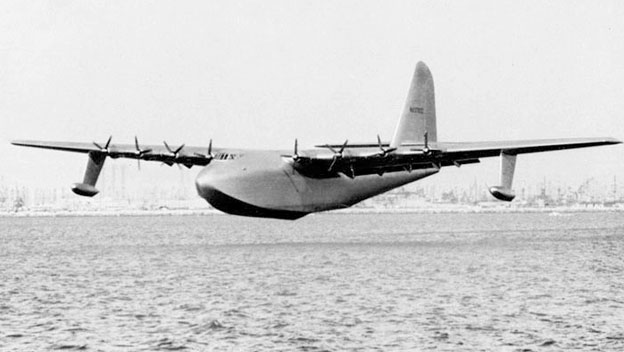 | ||
Engine type Pratt & Whitney R-4360 Wasp Major Designers | ||
Hughes h 4 hercules spruce goose during a test flight in united states hd stock footage
The Hughes H-4 Hercules (also known as the "Spruce Goose"; registration NX37602) is a prototype strategic airlift flying boat designed and built by the Hughes Aircraft Company. Intended as a transatlantic flight transport for use during World War II, it was not completed in time to be used in the war. The aircraft made only one brief flight on November 2, 1947, and the project never advanced beyond the single example produced. Built from wood because of wartime restrictions on the use of aluminium and concerns about weight, it was nicknamed by critics the "Spruce Goose", although it was made almost entirely of birch. The Hercules is the largest flying boat ever built and has the largest wingspan of any aircraft in history. It remains in good condition and is on display at the Evergreen Aviation & Space Museum in McMinnville, Oregon, United States.
Contents
- Hughes h 4 hercules spruce goose during a test flight in united states hd stock footage
- Hughes h 4 hercules flying boat reaches point of liftoff on its maiden flight in hd stock footage
- Design and development
- Operational history
- Display
- Specifications H 4
- References
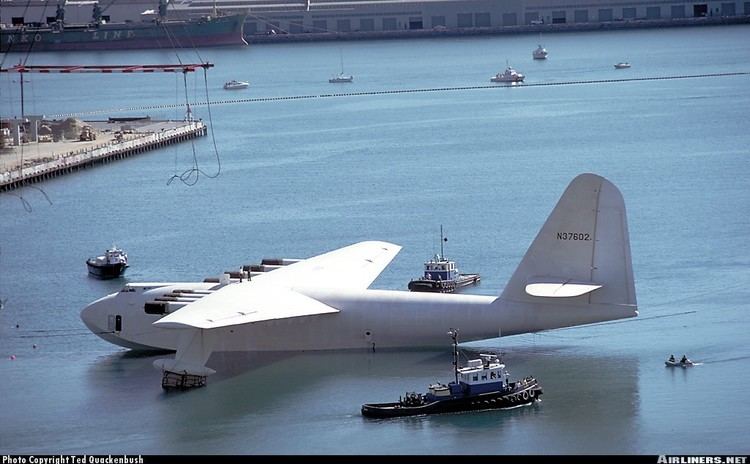
Hughes h 4 hercules flying boat reaches point of liftoff on its maiden flight in hd stock footage
Design and development
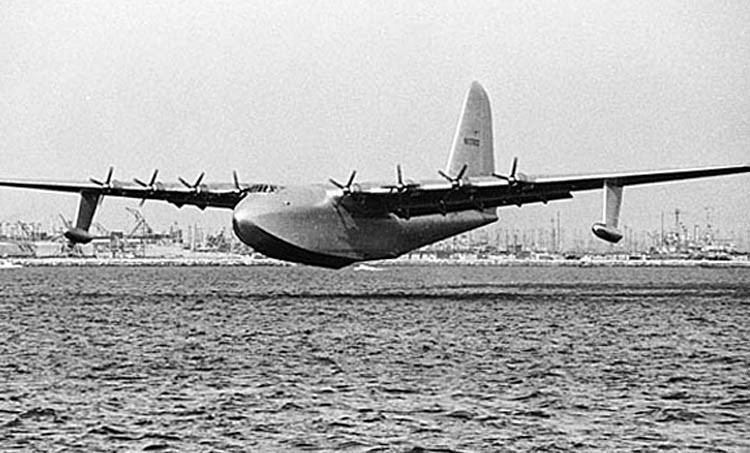
In 1942, the U.S. War Department needed to transport war materiel and personnel to Britain. Allied shipping in the Atlantic Ocean was suffering heavy losses to German U-boats, so a requirement was issued for an aircraft that could cross the Atlantic with a large payload. Wartime priorities meant the aircraft could not be made of strategic materials (e.g., aluminum).
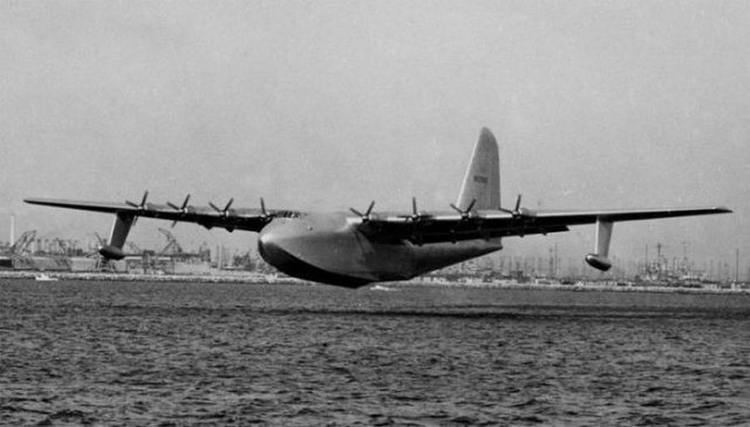
The aircraft was the brainchild of Henry J. Kaiser, a leading Liberty ship builder. He teamed with aircraft designer Howard Hughes to create what would become the largest aircraft built at that time. It was designed to carry 150,000 pounds, 750 fully equipped troops or two 30-ton M4 Sherman tanks. The original designation "HK-1" reflected the Hughes and Kaiser collaboration.

The HK-1 contract was issued in 1942 as a development contract and called for three aircraft to be constructed in two years for the war effort. Seven configurations were considered, including twin-hull and single-hull designs with combinations of four, six, and eight wing-mounted engines. The final design chosen was a behemoth, eclipsing any large transport then built. It would be built mostly of wood to conserve metal (its elevators and rudder were fabric-covered), and was nicknamed the "Spruce Goose" (a name Hughes hated) or the Flying Lumberyard.
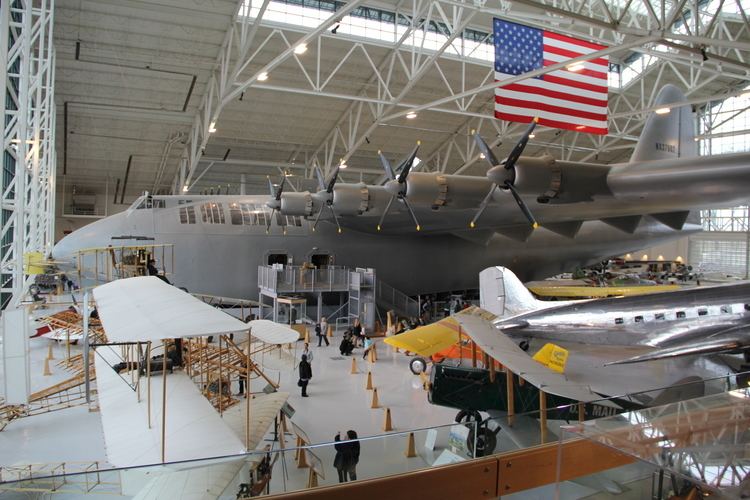
While Kaiser had originated the "flying cargo ship" concept, he did not have an aeronautical background and deferred to Hughes and his designer, Glenn Odekirk. Development dragged on, which frustrated Kaiser, who blamed delays partly on restrictions placed for the acquisition of strategic materials such as aluminum, and partly on Hughes' insistence on "perfection". Construction of the first HK-1 took place 16 months after the receipt of the development contract. Kaiser then withdrew from the project.
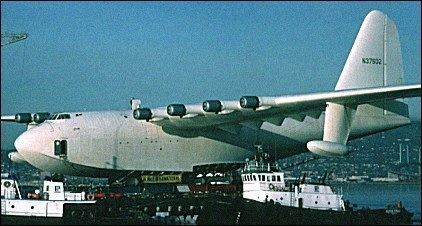
Hughes continued the program on his own under the designation "H-4 Hercules", signing a new government contract that now limited production to one example. Work proceeded slowly, and the H-4 was not completed until well after the war was over. It was built by the Hughes Aircraft Company at Hughes Airport, location of present-day Playa Vista, Los Angeles, California, employing the plywood-and-resin "Duramold" process – a form of composite technology – for the laminated wood construction, which was considered a technological tour de force. The specialized wood veneer was made by Roddis Manufacturing in Marshfield, Wisconsin. Hamilton Roddis had teams of young women ironing the (unusually thin) strong birch wood veneer before shipping to California.
A house moving company transported the airplane on streets to Pier E in Long Beach, California. They moved it in three large sections: the fuselage, each wing—and a fourth, smaller shipment with tail assembly parts and other smaller assemblies. After Hughes Aircraft completed final assembly, they erected a hangar around the flying boat, with a ramp to launch the H-4 into the harbor.
Howard Hughes was called to testify before the Senate War Investigating Committee in 1947 over the use of government funds for the aircraft. During a Senate hearing on August 6, 1947 (the first of a series of appearances), Hughes said:
The Hercules was a monumental undertaking. It is the largest aircraft ever built. It is over five stories tall with a wingspan longer than a football field. That's more than a city block. Now, I put the sweat of my life into this thing. I have my reputation all rolled up in it and I have stated several times that if it's a failure, I'll probably leave this country and never come back. And I mean it.
In all, development cost for the plane reached $23 million (equalling $283,085,179.49 in 2016)
Operational history
Hughes returned to California during a break in the Senate hearings to run taxi tests on the H-4. On November 2, 1947, the taxi tests began with Hughes at the controls. His crew included Dave Grant as copilot, two flight engineers, Don Smith and Joe Petrali, 16 mechanics, and two other flight crew. The H-4 also carried seven invited guests from the press corps and an additional seven industry representatives. Thirty-six were on board.
Four reporters left to file stories after the first two taxi runs while the remaining press stayed for the final test run of the day. After picking up speed on the channel facing Cabrillo Beach the Hercules lifted off, remaining airborne at 70 ft (21 m) off the water at a speed of 135 miles per hour (217 km/h) for about one mile (1.6 km). At this altitude the aircraft still experienced ground effect. The brief flight proved to detractors that Hughes' (now unneeded) masterpiece was flight-worthy—thus vindicating the use of government funds. The Spruce Goose, however, never flew again. Its lifting capacity and ceiling were never tested. A full-time crew of 300 workers, all sworn to secrecy, maintained the aircraft in flying condition in a climate-controlled hangar. The company reduced the crew to 50 workers in 1962 and then disbanded it after Hughes' death in 1976.
Display
In 1980, the Hercules was acquired by the Aero Club of Southern California, which put the aircraft on display in a large dome adjacent to the Queen Mary exhibit in Long Beach, California. In 1988, The Walt Disney Company acquired both attractions and the associated real estate. Disney informed the Aero Club of Southern California that it no longer wished to display the Hercules after its highly ambitious Port Disney was scrapped. After a long search for a suitable host, the Aero Club of Southern California arranged for the Hughes flying boat to be given to Evergreen Aviation Museum in exchange for payments and a percentage of the museum's profits. The aircraft was transported by barge, train, and truck to its current home in McMinnville, Oregon (about 40 miles (60 km) southwest of Portland), where it was reassembled by Contractors Cargo Company and is currently on display. The aircraft arrived in McMinnville on February 27, 1993, after a 138-day, 1,055-mile (1,698 km) trip from Long Beach. The dome is now used by Carnival Cruise Lines as its Long Beach terminal.
By the mid-1990s, the former Hughes Aircraft hangars at Hughes Airport, including the one that held the Hercules, were converted into sound stages. Scenes from movies such as Titanic, What Women Want and End of Days have been filmed in the 315,000-square-foot (29,000 m2) aircraft hangar where Howard Hughes created the flying boat. The hangar will be preserved as a structure eligible for listing in the National Register of Historic Buildings in what is today the large light industry and housing development in the Playa Vista neighborhood of Los Angeles.
The Western Museum of Flight in Torrance, California has a large collection of construction photographs and blueprints of the Hercules.
Specifications (H-4)
Performance specifications are projected.
General characteristics
Performance
